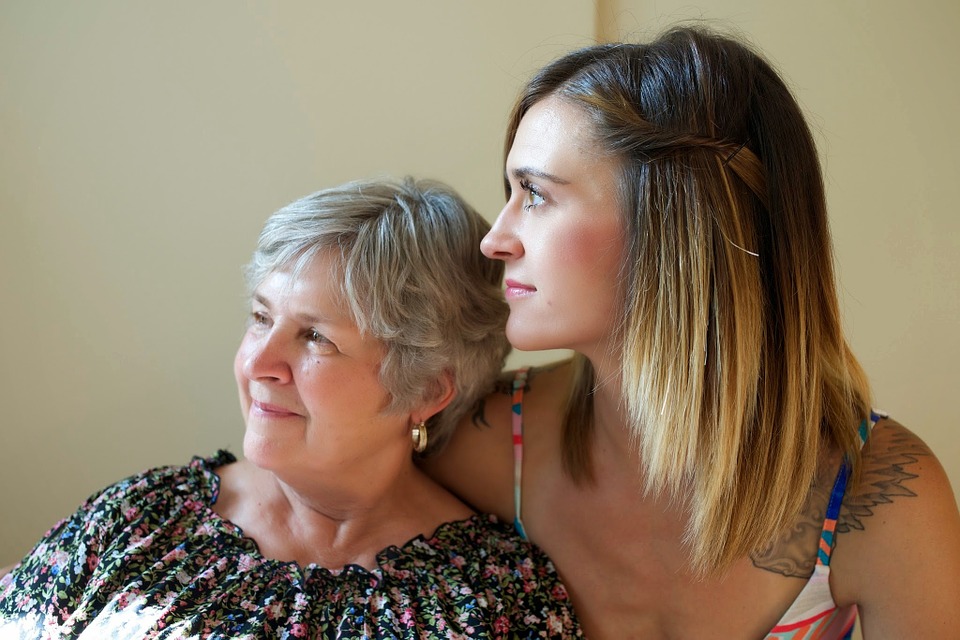Julie Entwistle, MBA, BHSc (OT), BSc (Health / Gerontology)
My grandmother always used to say “once an adult, twice a child”. She was referring to the fact that we start life dependent, and through the aging process, tend to end our life that way as well. So, what happens when the grown-up “child” needs to become the caregiving adult in a relationship with an aging parent? It leads to many tough conversations about some pretty big topics. Recognizing that some conversations are not only difficult, but could cause relationship-changing outcomes, I wanted to give you some pointers for handling the big ticket items adult children might encounter with their aging parents:
Driving
We all have a societal obligation to ensure that the roads are safe. Just like a parent not giving the keys to a teen that has not demonstrated adequate driving skills, adults need to look for this in their older parents too. While some seniors self-retire their license when they feel they are unsafe, some are not as willing, or able, to make this decision. I remember my grandmother stopped driving when one day behind the wheel she “woke up and the light was green”. While we joked about this as a family, we applauded her for making a responsible decision.
Making sure your parents are able to drive safely is important for them, and the general public. So how do you manage this? Next time you are out with your parent drive separately and follow them, or get them to drive with you in the car. Watch for the following:
- Are they driving to slow or too fast? Note that driving too slow can be just as dangerous as driving too fast.
- Are they obeying the traffic signs?
- Do they have the range of motion to look both ways and check blind spots? Are they looking around at stop signs, when merging lanes?
- How are they negotiating directions, are they getting lost frequently?
- Do they seem to be driving aggressively, or do they seem oblivious to other drivers, cyclists or pedestrians?
- Do they obey right of ways, manage one-way streets, can they park the car safely and easily in a lot or on a side-street?
If you have concerns about any of the above, you have a moral obligation to bring your concerns to their attention, or to the attention of their treating physician. If you choose to have this discussion with them directly, be caring and compassionate, but direct. Tell them about your concerns but instead of just telling them they shouldn’t drive, suggest the involvement of a professional like their doctor, an occupational therapist, or driving assessment. If you are not comfortable having this conversation with them, bring your concerns to the attention of their treating physician so they can do their own assessment.
Home Modifications
Most seniors want to remain in their own home as long as possible. Many recognize that some small changes to the home could have a big impact on their safety and function, and some are very hesitant to consider modifications. I remember I once had a call from a physician who was calling about his own parents, expressing concerns about his mother and how she was managing at home. We talked about the value of OT and he agreed that a home assessment would help her. He then asked “so, what should I say to her to get her to agree to this”? I found that surprising as even as a physician who is required to have difficult conversations with people all the time, he struggled to know how to approach his mom. I suggested he tell her that he recognizes it was very important to her to stay at home as long as possible, and that he is concerned that if she falls, staying home might not be an option. I told him to tell her that he wants to have an occupational therapist come and talk to her about her safety to make sure they are doing everything possible to keep her living at home for as long as she can. He called his mom, and like a kid planning a sleepover, called back and said “it worked, she said yes”!
I think it is important for adults of aging parents to demystify the home modification process and stress to their parents that most changes are minor, removable, or will actually increase the value of their home, while keeping them there for as long as possible.
But honestly, the best approach is usually letting a professional explain to the aging parent what can be done, and what they should consider either now, or in the future, to ensure their home continues to work for them. In that case, the difficult conversation is more getting the professional in the door, instead of trying to convince the parent of the changes that you feel (without full knowledge of the options) might be needed. Occupational therapists are great at getting a sense of what people need, explaining the options, and coming up with a plan. I always chuckle when I meet with seniors and the first thing they say is “I know my son says we need X, Y and Z, but just so you know we are not doing that”.
Relocation
There may come a time when being the primary caregiver of an aging parent who is trying to live at home, may become too much. Caregiving is a difficult task that often requires time, knowledge or a level of commitment that a working adult-child who might have children of their own, just does not have. Having a discussion with your parent about the need to relocate to get access to skilled or more available care, is difficult. Like the other conversations, tell your parent that their safety is your primary concern and that you are willing to do all you can to help them get the care they need. Remind them of your own capabilities and the other responsibilities that you are also trying to balance. Framing your conversation this way will go a long way to show them you are being supportive, and not just trying to tell them what to do or how to do it.
In the end, yes these conversations will be difficult, but your parents need your love, support and guidance as they navigate the aging process. I remember having a difficult conversation with my grandmother about her decision to use a walker instead of her wheelchair, when the wheelchair was much safer for her. She was giving me a hard time and I reminded her that she taught us to care about each other so the fact that I care about her safety was actually her own fault. She laughed and we had a great conversation about her fears about declining mobility and reducing independence.
I wish you the best as you navigate these difficult conversations with your parents. But remember, sometimes involving a professional (like an OT) who can assess the situation, come up with solutions, and develop a plan may go a long way to maintaining the parent / adult-child relationship, while keeping the parent safe at the same time.





